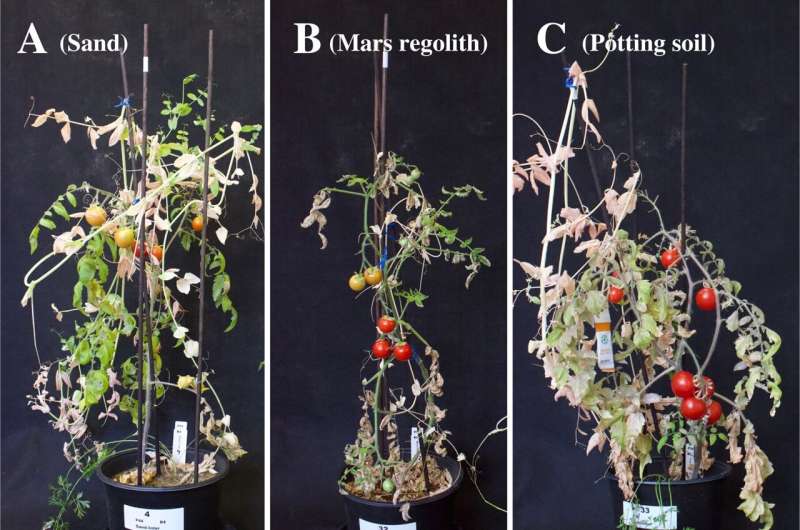Intercropping involves planting mutually beneficial types of crops in the same general vicinity. Planting green peas near tomato plants, for example, helps the tomato plants by fixing nitrogen in the soil—they pull nitrogen from the air and turn it into ammonia that is released into the soil, serving as a type of fertilizer for the tomato plant.
To find out if intercropping might help future Mars colonists optimize production of vegetables, the researchers filled pots with either imitation Martian regolith or standard potting soil and then placed them in a large greenhouse. They then planted three types of crops: tomatoes, carrots and green peas—prior studies have shown that they should be able to grow in Martian regolith. Some were planted alone in a pot, while others were mixed with other plants to see how they would cohabitate in a single soil sample.
The research team then tended their garden as plants grew in the pots. They found, as expected, that all three types of plants grew well in their greenhouse. They also found that tomato plants in the pots with both tomatoes and peas grew better than those grown alone. The tomatoes grew bigger and had more potassium. They also found that adding sand to the soil in some of the pots increased yields. On the other hand, they found that intercropping decreased yields for the peas and carrots—they preferred to grow alone.
More information: Rebeca Gonçalves et al, Intercropping on Mars: A promising system to optimise fresh food production in future Martian colonies, PLOS ONE (2024). DOI: 10.1371/journal.pone.0302149
Journal information:PLoS ONE
© 2024 Science X Network



